The generation of Intel CPU chip ever
Every year, Intel manufacturers release new products to meet the needs of users in the new era. The Intel CPU generations are more powerful than before, along with a series of cutting-edge technologies. Also thanks to the annual launch event that Intel proved to consumers that they are the 'big' in the computer processor industry. Today, Thuthuatphanmem.vn will summarize all generations of Intel CPUs so far (December 3, 2018).
I. Nahalem (First generation)
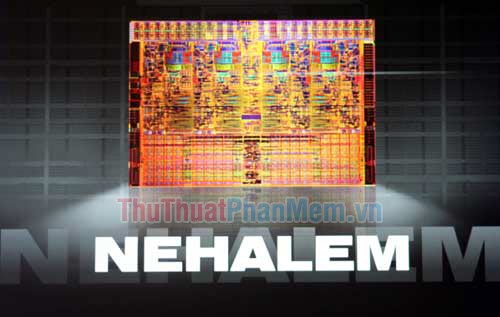
Nehalem is the first Intel Core I architecture to replace the long-standing Intel Core Duo / Core 2 Duo. Intel Core i Nehalem is developed on 45nm process, but there are some models manufactured from 32nanomet process platform but they are not very popular and little known because at that time the money spent to own too high. Nehalem is the first generation to be equipped with Turbo Boost technology with Hyper Threading data hyperthreading technology to overclock the processor speed of the processor to make the CPU more powerful. Since the first generation, Nehalem has had a major revolution in the market of computer processors with its superior strength.
II. Sandy Bridge (Second generation)
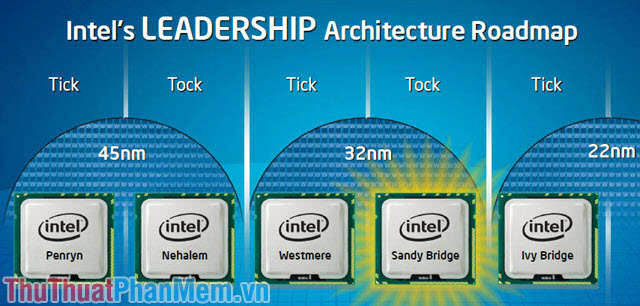
As the next successor to the Nehalem architecture, all Sandy Bridge architectures were produced at 32nm. In addition, Intel equipped with integrated GPU, Intel HD Graphic 3000, has also been produced on 32nm instead of 45nm as before. Because of this, Sandy Bridge can both save space and save more power than the previous one because the CPU and GPU share cache memory.
The Turbo Boost feature is also upgraded to the 2.0 board for better performance. In addition Sandy Bridge is supported with Intel Quick Sync Video technology that makes decoding videos easier.
When it came to the second generation, Intel was constantly improving its technologies and processes quickly to gradually bring Intel CPUs to the next level.
III. Ivy Bridge (Third generation)
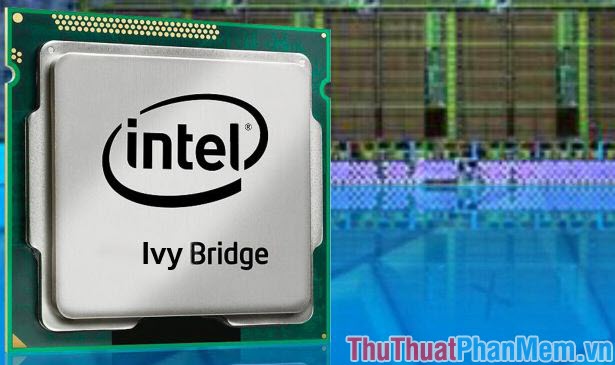
Like Sandy Bridge, the production process on Ivy Bridge has been reduced to 22nm with Tri-Gate 3D transistor technology which reduces the size but still increases the number of transistors. Ivy Bridge is also the first generation to support the standard USB 3.0 technology with integrated GPU also upgraded to HD Graphics 4000 with DirectX 11 support.
Graphics processing GPU has been significantly improved with the new generation of accompanying GPU is Intel HD 2500 or HD 4000 (on Sandy Bridge is Intel HD 2000 or HD 3000). The Intel HD 4000 is powerful enough to handle 4K resolution video. 3rd Generation Intel Core processors with Intel HD Graphic 4000 graphics processors help double the performance of 3D graphics compared to the previous generation of processors. Intel HD Graphic 4000 graphics card supports Microsoft DirectX11, OpenGL 3.1 and OpenCL 1.1.
IV. Haswell (Fourth generation)
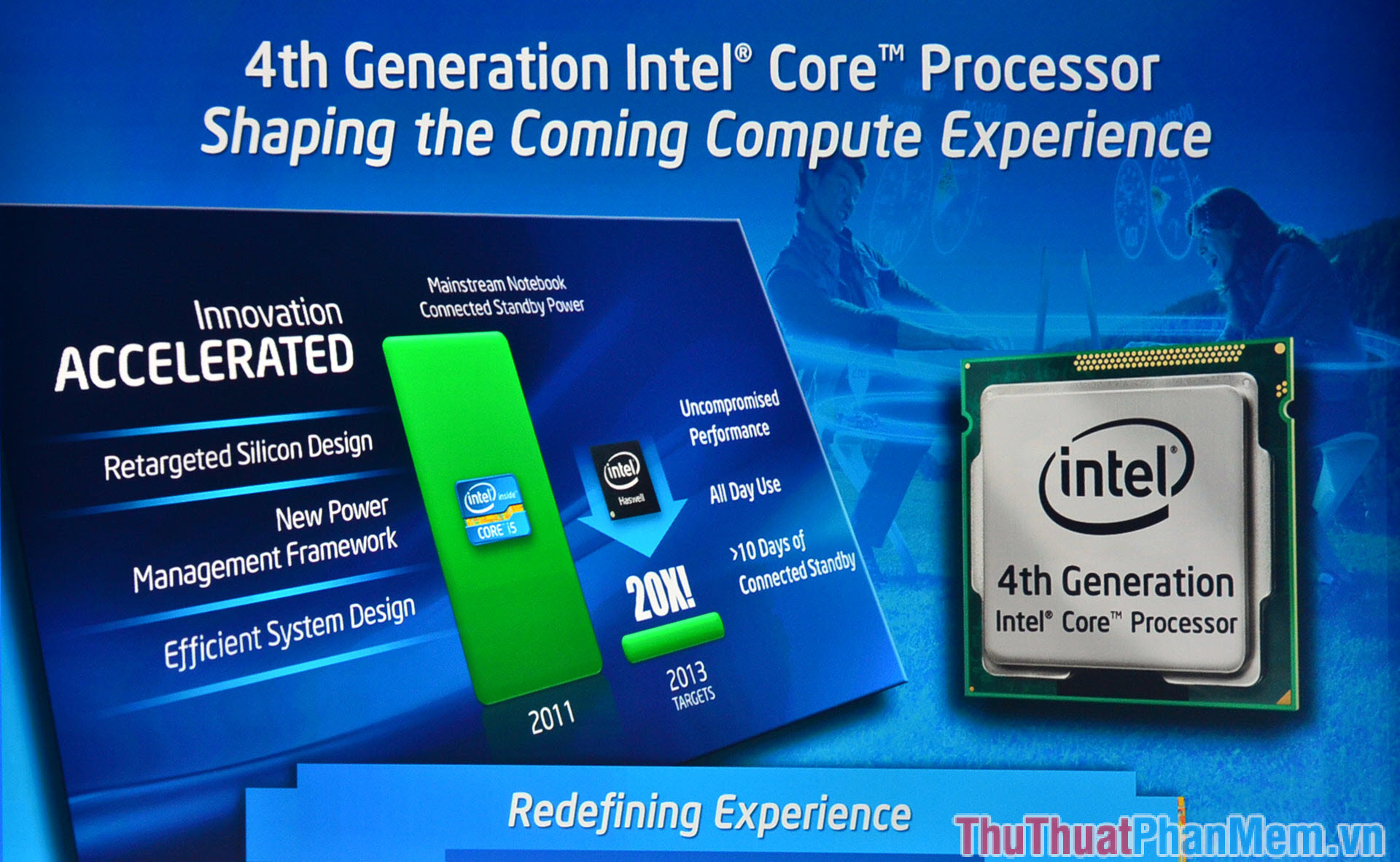
Intel Haswell CPUs are the main processor series for laptops and tablet hybrid devices (2 in 1) or Ultrabook series. With its technologies, Intel has made Haswell CPUs more energy efficient. But in return Haswell CPU hotter than the previous generation. Thereby helping to design the device on thinner but slightly during use. According to Intel's statement, Haswell generation gives 20 times more waiting time than Sandy Bridge generation. Graphics chips are also an advantage of this fourth generation. In addition to the Intel HD Graphic 4000 Series, Intel has also equipped the powerful Iris / Iris Pro series of graphics chips for more advanced versions.
V. Broadwell (Fifth Generation)
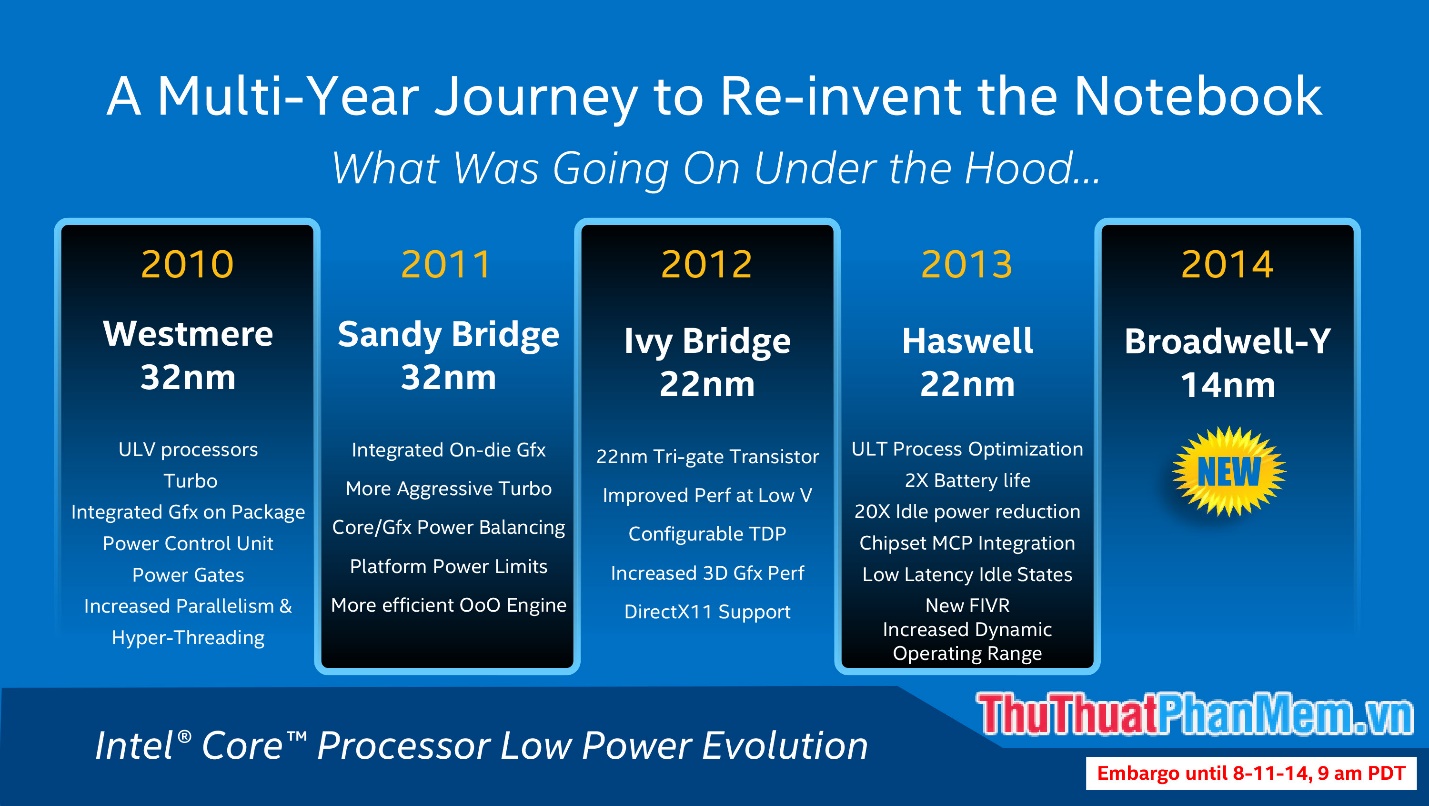
Broadwell is the next generation of Intel CPUs but not a replacement for Haswell but only replacing the manufacturing technology process to 14nm, saving 30% more power. The most outstanding feature on Broadwell is the Intel Quick Sync video decoding hardware that supports VP8 encoding and decoding, including the new GPU including Intel HD Garphics 5000 and Iris 6100, Iris Pro 6200 / 6300P series.
In addition, in this Broadwell generation, Intel also announced a new CPU line, Intel Core M with SoC design (like on smartphone processors) for compact devices such as tablets or Ultrabooks. extremely thin and light with about 3.0W TDB => 4.2W and still get a good level of performance.
BECAUSE. Skylake (Sixth generation)
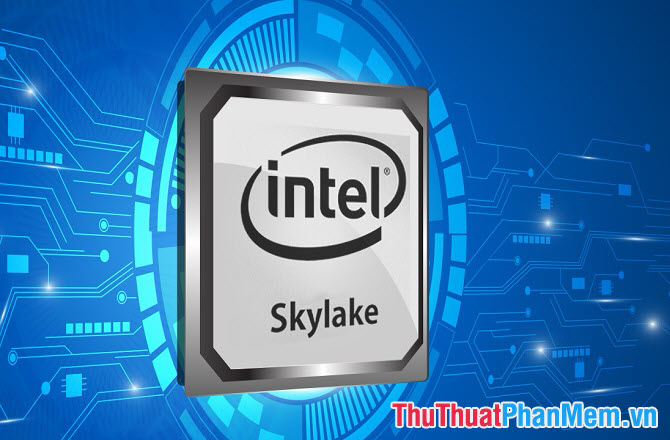
Intel Skylake CPUs are still developed on 14nm process and use the new LGA1151 Socket, so they will no longer be used with LGA1150 mainboards used on Haswell and Broadwell generations. Skylake's greatest strength is its support for DDR4 RAM standard, HDMI 2.0 (4K 60Hz) image export standard.
In particular, this is also the first version to support the new connector, ThunderBolt 3, to help transfer data faster, add a separate graphics dock to handle heavy graphics, gaming and practical technology. Virtual (VR) is growing strongly.
VII. Kabylake (Seventh Generation)
The next son of Intel instead of Skylake is Kabylake. In the seventh generation, the manufacturing process has been upgraded to 14nm + to help increase performance and save more energy. With the explosion of virtual reality technology, Kabylake focuses its support on image processing capabilities with 4K resolution or higher, 360 ° videos.
At the same time, the Kabylake generation is also aimed at gamers with graphics processing performance. Combined with the ability to connect 4 ThunderBolt 3 ports will help to experience images of today's great games come to life and most honest. Especially the VR game experience.

VIII. Coffeelake (Eighth Generation)
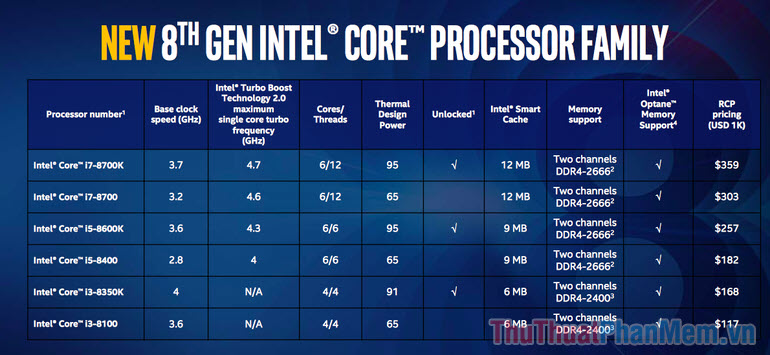
The 8th generation launch was a major revolution for Intel as it upgraded most of its products. Especially, I can not mention Core I3 8th when it has increased to 4 cores / 4 threads (equivalent to Core I5 7th in the high-end segment). And in turn Core I5 and Core I7 also get 2 more cores. Because of that Coffeelake has brought users a lot of new experiences. And Intel has high expectations that this upgrade is enough to beat its rival, AMD Ryzen.
IX. Coffee Lake Refresh (9th Generation)
Just recently, Intel started announcing its 9th generation but still no official name. The 9th generation is actually just an upgraded version of the 8th generation and adds to each CPU a little more clock to get stronger. The product line of overclocking support was launched first as: I9-9900K, I7-9700K, I5-9600K, .
As for CPUs that do not support OC, we may have to wait a while longer. Intel strongly states that: 'The Core I9-9900K CPU is the best gaming CPU in the world today! 'In the market of Intel processors increasingly asserted their name.
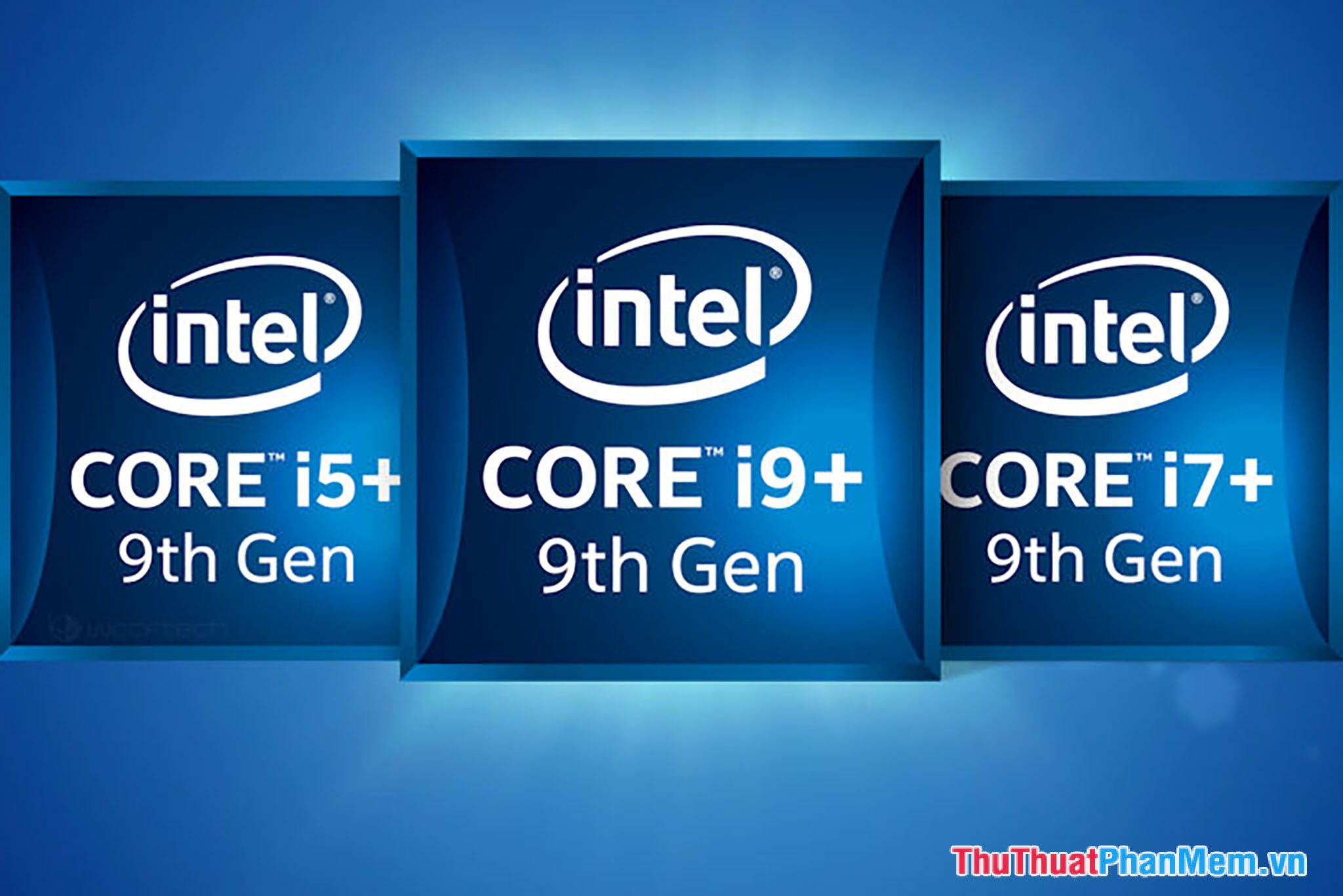
You should read it
- Intel shook hands with AMD to release the 8th generation chip competing with Nvidia
- Benchmarking route of Coffee Lake - 8th generation Intel chip
- Intel launches 45nm mobile Penryn chip
- The chip that combines Intel and AMD gives the baby PC with a palm that can use VR
- Intel unveiled a powerful 9th generation H series CPU for gaming laptops
- Top 5 best Intel CPUs 2022
 7 rules to remember when naming hardware devices
7 rules to remember when naming hardware devices True wireless earphones HTC U Ear shows real photos, quite similar to Apple's AirPods
True wireless earphones HTC U Ear shows real photos, quite similar to Apple's AirPods Dell announced a new generation of Alienware computers
Dell announced a new generation of Alienware computers Intel released the new generation Comet Lake vPro processor, promising many valuable improvements
Intel released the new generation Comet Lake vPro processor, promising many valuable improvements Top 4 MSI Z490 motherboards worth buying to upgrade to Intel Core I Gen 10 platform
Top 4 MSI Z490 motherboards worth buying to upgrade to Intel Core I Gen 10 platform Review Logitech MX Anywhere 2S: Compact design, impressive battery life
Review Logitech MX Anywhere 2S: Compact design, impressive battery life